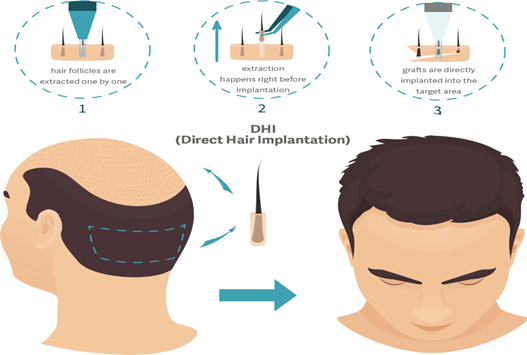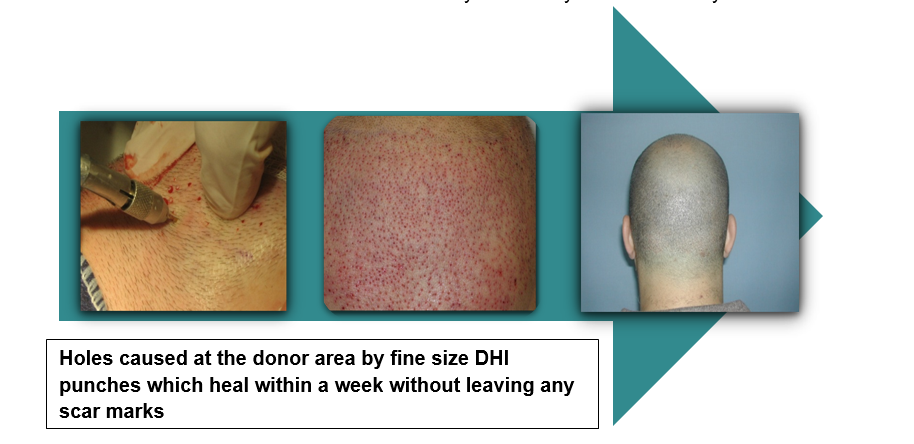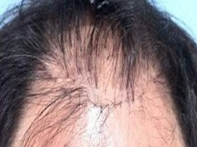Importance of angle, depth and direction during implantation in hair transplant

Importance of angle, depth and direction during implantation in hair transplant
Hair transplantation is a surgical technique to remove hair follicles from one part of the body, called the ‘donor site’, and place into a balding area of the body known as the ‘recipient site’. The technique is primarily used to treat male pattern baldness or female pattern baldness.
Hair transplant surgery can be of either FUT or FUE types. At our centre, we employ the DHI (Direct Hair Implantation) method of hair transplant for achieving an extremely aesthetic and natural look.
More about the “DHI Direct” method:
- Different from the traditional FUE and FUT, the DHI Direct method does not use scalpels, incisions or stitches during removal and grafting of hair.
- To minimize damage to the scalp, the follicular units are removed individually and carefully with the help of a special non-electric instrument (with a diameter of 1mm or less).
- There is minimum handling of the graft tissues and they never remain outside their natural environment for long.
- The implantation is also carried out gently: The hair follicles are implanted directly into the scalp in one step using the unique DHI implanter.
- This special instrument helps achieve absolute control over the depth, direction and angle of the implantation of the hair follicles.
- All these factors ensure a 100% safe and natural result and lifelong growth of the transplanted hair.

Strict adhering to the above mentioned protocol helps achieve natural, aesthetic and predictable results every single time.
| Following is thus the USP of the DHI Technique:
1. Highest safety and Quality:
Strict quality control at every step to ensure maximum safety and quality.
2. Most Natural results:
Absolute control over the depth, direction and angle during implantation ensures a 100% natural result.
3. Maximum graft survival
Follicle survival rate > 90%
4. Painless and fast healing
The smallest possible instruments are used for removal and implantation
5. Assured lifelong hair growth
Only healthy hair follicles with best growth potential are selected and implanted.
6. Exclusively Qualified doctors
The procedure is carried out exclusively by trained and certified doctors only.
|
Below are some key points to which we pay attention during a DHI Hair Transplant:
- Extraction method
- Extraction is the first step in hair transplant surgery.
- It involves careful removal of hair follicles from a safe donor area (preferably back part of the scalp) and placing them in an area of less density.
- In the DHI method, extraction is done using a sharp manually held punch cutting device which is made of titanium
- Because of the manual cutting device with 1 mm punch, the scar holes after extraction are of a small size and they heal easily within a few days

- Preservation of grafts:
- Once the grafts are extracted, they are carefully and delicately handled to separate the single and multiple follicles from them
- The grafts are stored in a special storage solution to increase their viability.
- Implantation method:
- The hair follicles are implanted in a single step using a patented, disposable, single use implanter device.
- With the implanter, correct angle, depth and direction can be maintained at which the graft are inserted at all times.
- Thus, the hairs have a natural emerging profile, they have a natural fall, the grafts survive longer and the resulting look is 100% natural.
- Direct implantation of hair follicles with the DHI implanter provides a natural look, without visible scars on the affected area.

5 Important steps for achieving natural look of grafted hair
- During implantation, each follicle is inserted directly with the DHI patented implanter
- As the implanter is a pen like light weight device, it can be easily used to control the angle, depth and direction in which the grafts are placed.


Note the angle, direction and curl of transplanted hair mimicking natural hair pattern.
Failure to adhere to the above mentioned parameters can lead to the following:
- Incorrect angle of grafting
- Not paying attention to the angle of grafting can result in an unnatural look
- In the hairline and frontal zones, angle and direction of hair plays a big role
- Hairs may not have a natural fall such as in the temple and sides
- In men undergoing hair transplantation, hairs are placed at a relatively vertical angle in the mid-scalp zone, so that the texture, thickness, density and curl of individual hair shafts is less noticeable.
- Thicker grafts can be inserted at a slightly more acute angle than preexisting thinner hairs to match hair curl, thereby preventing implanted grafts from sticking out.

- Improper depth of implanting
- One of the main attributes of the DHI Technique is that we use specially designed implanters with the right needle bore and size for optimum implantation.
- With the DHI Implanter pen, we can insert the grafts easily with precision and in the right depth in the skin
- For achieving a natural look, 5-1 mm. of the epithelial graft tissue must remain outside the skin to help plug the graft naturally.
- If excess of the tissue is left out, it gives an unesthetic cobblestoning or ‘goose skin’ appearance to the transplanted region
- If the grafts are left buried in the scalp skin, with no external tag of tissue, it creates pitting in the skin surface
- Also buried grafts can result in the problem of ingrowing hairs or cysts



Cobblestoning or raised Pitting due to buried grafts Incorrect angle of grafting
hair plugs
- Unnatural curl of the hair
- Paying proper attention to the angle and direction of the hair helps achieve the natural curl of the patient’s hair
- Every person has a unique curl pattern, and the curl of all hairs is not the same in any one person; each individual’s hair has a wide variety of curl patterns.
- Asians’ hair is neither straight nor curly, but has mixed properties of both wavy and straight hair.
- Transplanted curly or wavy hair grows according to its own curl after the hair shaft exits the skin.
- The curl, thickness, and growth direction of each hair shaft are more visible, and this visibility affects the naturalness of the appearance.
- Flow of the hair
- Gravity has a greater effect on hair angle and flow of the hair.
- It acts equally on all hairs, but it affects hairs differently according to their flow and direction of growth such as in the forehead, temples or sides.
- Hair shaft thickness is important for determining how much the direction of hair growth is affected by its curl and gravity, and in achieving a natural-looking pattern.
Paying attention to these concepts can be done by examining patients during the follow-up period and observing the actual direction of implanted hair growth. Thus, it is important to select a clinic and doctor who are aware about these small details and who include it in their surgeries to guarantee success.










